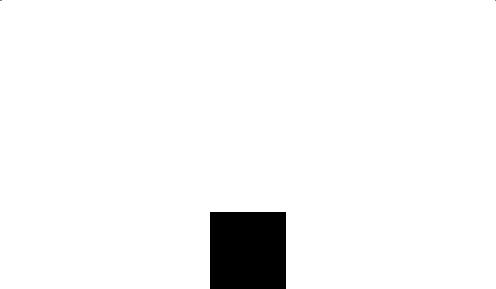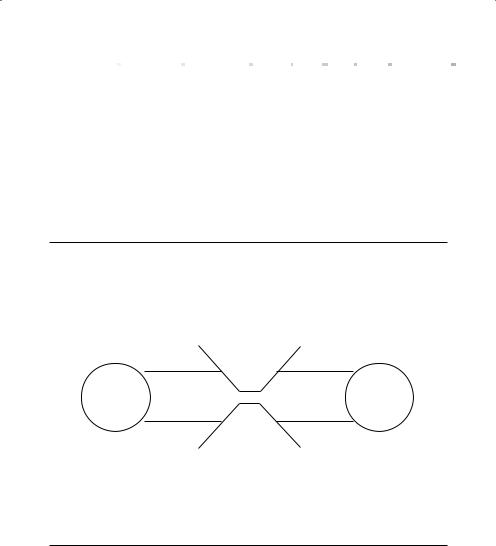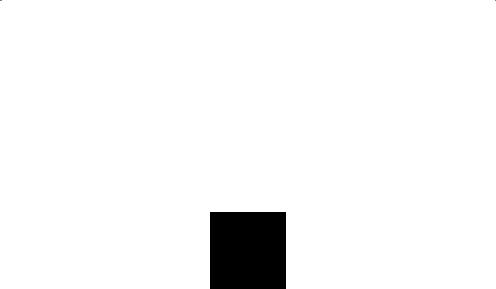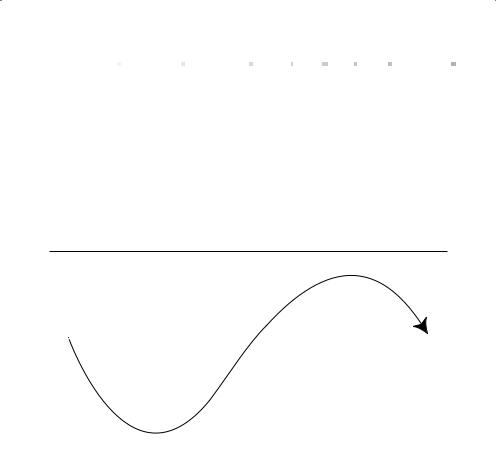
Tracy B., Fraser C. - TurboCoach[c] a powerful system for achieving breakthrough career success (2005)(en)
.pdf
ONE COMMON FEATURE of the complex activities you engage in—from building a production facility to negotiating your daily commute—is that they contain a limiting or constraining factor that directly affects the speed with which you can complete the process or achieve your goal.
For example, construction of the production plant may be delayed due to missed delivery dates or unscheduled soil or groundwater testing. Your commute may involve taking a freeway where traffic slows down every morning at the same point. These bottlenecks or choke points can determine how quickly you achieve your goals, or if in fact you achieve them at all.
To achieve any goal you set for yourself, the first step is

42 |
|
|
|
|
|
|
|
|
|
|
|
|
|
|
|
|
|
|
|
|
|
|
|
|
|
|
|
|
|
|
|
|
|
|
|
|
|
|
|
|
|
|
|
|
|
|
|
|
|
|
|
|
|
|
|
|
TurboCoach |
|
|
|||||||||||||||||||
|
|
|
|
|
|
|
|
|
|
|
|
|
|
|
|
|
|
|
|
|
|
|
|
|
|
|
|
|
|
|
|
|
|
|
|
|
|
|
|
|
|
|
|
|
|
|
|
|
|
|
|
|
|
|
|
|
|
|
|
|
|
|
|
|
|
|
|
|
|
|
|
|
|
|
|
|
|
|
to identify the tasks you will need to undertake to reach your goal. Next, analyze each of these steps to see which is a critical limiting factor—in other words, which of these steps could limit your ability to achieve your goal within the time limit you have set.
Figure 6-1.
Theory of Constraints
Critical Constraints: For every goal or project in progress there is at least one critical constraint that determines how fast you achieve it.
What factor sets the speed at which you achieve your goal?
|
Constraint |
YOU |
GOAL |
|
Constraint |
Now |
Future |
1.Be clear about your goal.
2.Identify your limiting factor.
3.Focus on alleviating it.
At this point, ask yourself this question: Why haven’t I achieved my goal already?
For example, if your goal is to increase your income by 50 percent, why aren’t you earning at that level? If you want to increase your fitness level, why aren’t you exercising every day? Frequently, the simple act of asking and answering these hard questions will spotlight the critical constraint that keeps you from reaching your goal.
Consider this: A small percentage of the constraints that

Remove Your Critical Constraints |
43 |
|
keep you from reaching your career or personal goals (around 20 percent) exist outside of yourself. The lion’s share of these constraints—fully 80 percent—exist within you. The same is true for your business—80 percent of the constraints exist within your organization, not outside. If you have not reached your desired income level, found the time or motivation to exercise daily, or brought your business to desired revenue levels, ask yourself the hard questions. You will very likely find that the answers lie in your own habits, beliefs, attitudes, and opinions, as well as your range and level of skills and abilities—or lack thereof.
Successful people identify obstacles within themselves before looking outside for answers. They ask, ‘‘What am I doing that is holding me back?’’ or ‘‘What are we doing inside our business organization that inhibits our progress?’’ Once you set an important goal, your first step is to start with yourself and look outward from there. You are in control of your own time and your own actions and attitudes, and you must be in control of your own business. Your attitude and energy play a huge role in how far you go in life. Your ability to affect or control other people or external events is limited, so always begin with yourself. Examine each new challenge by asking, ‘‘What is it in me that is holding me back?’’
Application Exercise
1.What is your major career goal?
2.What are the critical constraints to achieving your major career goal?

44 |
|
|
|
|
|
|
|
|
|
|
|
|
|
|
|
|
|
|
|
|
|
|
|
|
|
|
|
|
|
|
|
|
|
|
|
|
|
|
|
|
|
|
|
|
|
|
|
|
|
|
|
|
|
|
|
|
TurboCoach |
|
|
|||||||||||||||||||
|
|
|
|
|
|
|
|
|
|
|
|
|
|
|
|
|
|
|
|
|
|
|
|
|
|
|
|
|
|
|
|
|
|
|
|
|
|
|
|
|
|
|
|
|
|
|
|
|
|
|
|
|
|
|
|
|
|
|
|
|
|
|
|
|
|
|
|
|
|
|
|
|
|
|
|
|
|
|
3.How will you overcome these critical constraints?
4.What is the major goal of your business?
5.What are the critical constraints to achieving this major business goal?
6.How will you overcome these critical constraints in your business?
7.What actions do you commit to take immediately as a result of insights gained in this chapter?
‘‘Difficulties are things that show what men are.’’
EPICTETUS

CHAPTER 7
Where Are You on the Sigmoid Curve?
‘‘Change is not made without inconvenience, even from worse to better.’’
RICHARD HOOKER
Do you regularly examine your career or business plans to assess their usefulness? YES NO
Do you seek new ideas and input on a regular basis to ensure you are responding to changing conditions that affect your career or busi-
ness? YES NO
............................................................
This chapter examines the Sigmoid Curve, which illustrates the life cycle that all enterprises experience over time. Understanding this cycle can help you to develop effective responses to changes and opportunities in your career or business. The Application Exercise at the end of the chapter is designed to help you master the various phases of growth, decline, and leveling off that charac-
terize all dynamic undertakings.
...................................................
45
This page intentionally left blank

IF YOU OBSERVE THEM CLOSELY, you will see that careers and businesses follow predictable cycles, like the seasons of the year. Most enterprises follow a cycle that resembles an ‘‘S’’ lying on its side, and this is known as the Sigmoid Curve. All new activities start out at the high point of the ‘‘S’’ on the left, then head downward during a learning phase, head back up as they experience a growth phase, then level off at the top before declining again. (See Figure 7-1.)
The cycles described by the Sigmoid Curve do not just apply to careers and businesses. They describe the life cycles of products and services, relationships, institutions, and the life spans of nations and empires.
Take a moment to assess where your life and your career

48 |
|
|
|
|
|
|
|
|
|
|
|
|
|
|
|
|
|
|
|
|
|
|
|
|
|
|
|
|
|
|
|
|
|
|
|
|
|
|
|
|
|
|
|
|
|
|
|
|
|
|
|
|
|
|
|
|
TurboCoach |
|
|
|||||||||||||||||||
|
|
|
|
|
|
|
|
|
|
|
|
|
|
|
|
|
|
|
|
|
|
|
|
|
|
|
|
|
|
|
|
|
|
|
|
|
|
|
|
|
|
|
|
|
|
|
|
|
|
|
|
|
|
|
|
|
|
|
|
|
|
|
|
|
|
|
|
|
|
|
|
|
|
|
|
|
|
|
or business fall on the Sigmoid Curve. Do you find yourself in phase one, the Learning Phase? Are you in phase two, the Growth Phase? Do you find yourself between phases two and three, in a period of Leveling Off? Or are you at phase three, the Decline Phase?
Figure 7-1. Sigmoid Curve
|
I |
II |
|
|
|
Learning |
Growth |
|
|
|
Phase |
Phase |
III |
|
|
|
|
||
|
|
|
Decline |
|
|
|
|
Phase |
|
|
|
|
|
|
|
|
|
|
|
Let’s take a closer look at what you can expect to encounter in each of these phases. Phase one, the Learning Phase, is characterized by a high level of activity. As you launch your career or business, you confront opportunities and problems, take on new initiatives and absorb the lessons they teach you, and invest high levels of energy and time to achieve professional and financial rewards. Most new business ventures do not survive phase one. They lack either the will or the means to survive, or both. The high failure rate of business start-ups is testimony to the difficulty of phase one.
If you have survived phase one, you will enter the heady atmosphere of the Growth Phase. During phase two, busi-

Where Are You on the Sigmoid Curve? |
49 |
|
ness and revenues surge ahead, possibilities multiply, and the atmosphere is one of energy and exhilaration. This is an exciting time in a career or business when opportunities present themselves at every turn and mistakes are merely chances to learn and grow, leading to new avenues for success rather than failure.
In phase three, the Decline Phase, careers and businesses experience a drop in sales, rewards, and excitement. The atmosphere mirrors the decline in revenues and is marked by a loss of enthusiasm and a dip in morale. The verve and excitement that marked phase two diminish. You may question whether you have chosen the right career, or if you should be in the business you have chosen for yourself.
Successful people learn to track the health of their careers or businesses by continually monitoring their positions on the Sigmoid Curve. They respond quickly and decisively to any changes that could affect their futures or the futures of their businesses.
In phase one, the qualities of courage and persistence help you hold onto the vision you have for your career or business. Flexibility in setting and executing strategy to attain that vision is also a key trait during this phase.
During phase two, enjoy your growing success but keep a close watch on both the economy and the marketplace. Never allow success to make you complacent. Be prepared to make whatever changes are needed to keep your competitive edge. Your first responsibility to both your career and your business is to recognize and understand changes and influences in your market and continually adapt both yourself and your business to ensure continuing success.
While you are in phase two, take advantage of strong revenue and profits by building a substantial cash reserve

50 |
|
|
|
|
|
|
|
|
|
|
|
|
|
|
|
|
|
|
|
|
|
|
|
|
|
|
|
|
|
|
|
|
|
|
|
|
|
|
|
|
|
|
|
|
|
|
|
|
|
|
|
|
|
|
|
|
TurboCoach |
|
|
|||||||||||||||||||
|
|
|
|
|
|
|
|
|
|
|
|
|
|
|
|
|
|
|
|
|
|
|
|
|
|
|
|
|
|
|
|
|
|
|
|
|
|
|
|
|
|
|
|
|
|
|
|
|
|
|
|
|
|
|
|
|
|
|
|
|
|
|
|
|
|
|
|
|
|
|
|
|
|
|
|
|
|
|
that can serve as a buffer during this renewal process, which is often beset by unexpected challenges.
The consequence of failing to focus on changing conditions is that change will overtake you and your career or business, and you will find yourself in the Decline Phase. In this phase, old personal habits and business practices no longer work. If you do find yourself in phase three, the solution is simple. Ask yourself the essential strategic planning questions we have examined in the previous chapters. Your goal is to transform phase three into a new phase one by reaffirming yourself and your career or business in response to changing external and internal conditions. The stakes in this phase are high: You must adapt and move on or fail. The challenges in phase three can be daunting, but they offer a chance to expand your leadership abilities, revisit your vision for your career or business, and bring new life to your work. The adaptation and reinvention required of all careers and businesses that find themselves in phase three is a hallmark of life in the twenty-first century. And it is a test all successful people must pass if they are to prevail in their careers or grow a profitable business.
Application Exercise
1.Where are you personally on the Sigmoid Curve? Phase one, the Learning Phase?
Phase two, the Growth Phase? Phase three, the Decline Phase?
2.If in phase one, what are you doing, personally, to ensure survival and to move into phase two?
